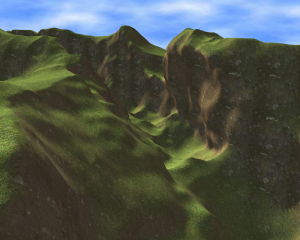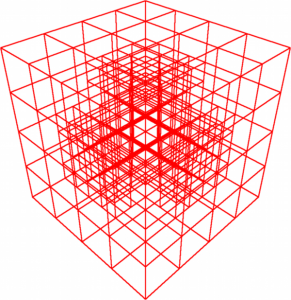Hello world from the Volume GFX page! This page is dedicated to volume rendering in realtime.

A volume terrain
I wrote my masterthesis about exactly this topic and participated at the Google Summer of Code at OGRE with the implementation. In the upcoming release 1.9 of OGRE, everything is included as a component! This page will give you the whole background how everything works behind the scenes. The first idea was to write one or more papers from the Thesis, but I think this way is nicer and more accessible. The cites and literature are also maintained, so you can dig deeper if you like.
As the development of the volume component is still active, this page goes far further than the masterthesis.
The structure is a blog and a series of in depth articles. It starts with just an introduction and the volume model. But from now on, every few days a new article gets released or existing ones updated. Each new article or update gets its own blog post to keep you updated, so stay tuned.
Feel free to hit the Flattr button if you like this work and want to support it.
Hello world from the Volume GFX page! This page is dedicated to volume rendering in realtime. I wrote my masterthesis about exactly this topic and participated at the Google Summer...

